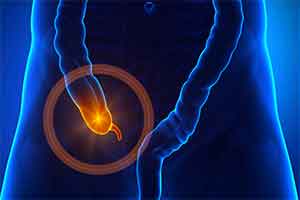Antibiotics for appendicitis – yes and no
 Using antibiotics as the primary treatment for mild appendicitis does not increase the risk for complications at least in the first year. But other considerations must also be taken into account, say researchers.
Using antibiotics as the primary treatment for mild appendicitis does not increase the risk for complications at least in the first year. But other considerations must also be taken into account, say researchers.
Surgery has been the standard treatment for appendicitis for more than a century. Millions of appendectomies are performed annually in the world. Studies have been carried out over the years to determine whether non-perforated appendicitis could be treated with antibiotics instead, but despite research results suggesting this, the choice of treatment remains largely unchanged.
An international collaboration group, including researchers from the University of Helsinki and McMaster University, analysed five randomised controlled trials comparing the use of antibiotics and appendectomy to treat appendicitis. The trials included in the meta-analysis encompassed a total of 1,116 patients. The results were published in the British Journal of Surgery.
According to the meta-analysis, roughly the same number of serious complications were found in the two groups: in 5% of the cases in the antibiotics group and 8% in the appendectomy group (pooled risk difference: -3%). In the antibiotics group, 8% of the patients underwent an appendectomy within one month, and appendicitis recurred in 23% of the cases during the twelve-month follow-up.
“The studies did not provide a high quality evidence for complications, but according to best evidence available, using antibiotics as the primary treatment for mild appendicitis does not lead to more complications in the first twelve months of follow-up,” summarises consultant gastrointestinal surgeon Ville Sallinen.
“Used as the primary treatment, antibiotics reduced the number of surgeries by 92% within the first month of diagnosis,” says adjunct professor Kari Tikkinen. “However, this choice of treatment meant that appendicitis recurred in 23 out of 100 patients within one year. Moreover, no long-term follow-up exists for now.”
Tikkinen and Sallinen, both from Helsinki University Hospital (Finland), point out that antibiotics can be used as the first-stage treatment for mild appendicitis, but that it is unclear how many of those treated with antibiotiocs first avoid surgery in the long term.
Sallinen also mentions the increasingly more common resistance to antibiotics: “Would a change in treatment preferences and an increased use of antibiotics further boost this negative trend?”
To initiate antibiotics treatment, the diagnosis must be confirmed by a CT scan, which exposes the patient to radiation. “A diagnosis must always be made in emergency surgical care. The treatment must not be chosen based on suspicion alone,” Sallinen says.
Based on available evidence, the choice between surgery and antibiotics as treatment for mild appendicitis is a value and preference sensitive decision. Do we primarily want to prevent the appendicitis from recurring or do we want to avoid surgery if it is not possibly necessary?
“In medicine and surgery, treatment choices are increasingly based on shared decision-making, where patients and care providers make decisions together. I expect that this will also increasing apply to treatment of mild appendicitis,” says Tikkinen.
Source: Helsingin yliopisto (University of Helsinki)
Full bibliographic information:
Ville Sallinen, Elie A. Akl, John J. You, Arnav Agarwal, Sami Shoucair, Per O. Vandvik, Thomas Agoritsas, Diane Heels-Ansdell, Gordon H. Guyatt ja Kari A.O. Tikkinen. Antibiotic therapy versus appendectomy for treatment of non-perforated acute appendicitis: a systematic review and meta-analysis. Br J Surg 17 March, 2016

